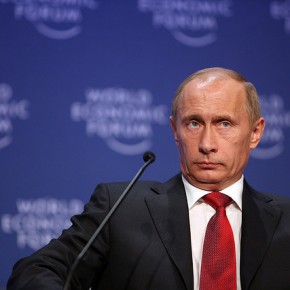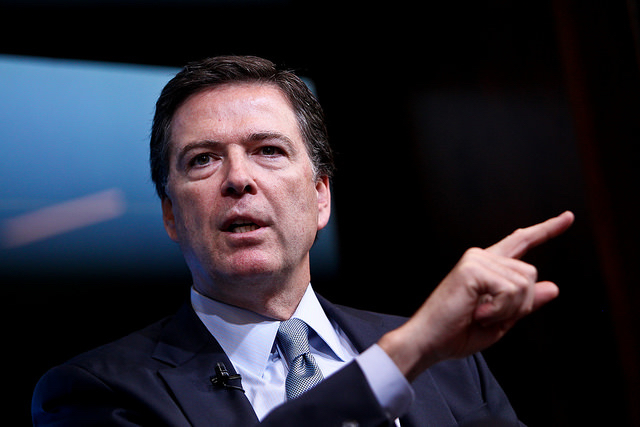In some circles, Inherent Vice was the most eagerly anticipated film of last year. Its director, Paul Thomas Anderson, has long been a favorite of cinephiles, both for the excellent performances he gets from actors and his delightfully retrograde insistence on shooting to film. But tackling the work of the legendary writer Thomas Pynchon added greatly to the hype.
Despite his stature, Pynchon is very much a love-him-or-leave-him figure. When you publish novels in six different decades, though, the number of people in the former category can be quite large. And almost all of those fans, even the ones who doubted whether anyone could translate his style to the screen, wanted to see what Anderson would come up with.
It didn’t hurt that the most rabid Pynchonites tend to regard Inherent Vice as a lesser work in the author’s canon, lacking the conceptual brilliance for which he is famous. Perhaps more importantly, Inherent Vice also stands alone. Pynchon’s 1989 comeback novel Vineland, released after a long, J.D. Salinger-like disappearance, disappointed many fans, who had been hoping for something on par with his sprawling 1973 masterpiece Gravity’s Rainbow. But at least it picked up loose threads from his previous books. Inherent Vice, by contrast, struck quite a few people as Pynchon’s perverse attempt to rewrite his 1966 novella The Crying of Lot 49 without a lot of its abstruse wonder.
Even if Inherent Vice qualifies as “Pynchon lite”, though, it retains enough of its author’s distinctive style — labyrinthine sentences, witty dialogue and silly songs — to make adapting it for the screen a major challenge. While Anderson’s track record in pictures like Boogie Nights, Magnolia and There Will Be Blood strongly suggested that he could manage the delicate transitions between “high magic” and “low puns” that make Pynchon’s work so distinctive, how he would go about it was fascinating to contemplate. For those not already intimately familiar with Pynchon’s work, however, the most pressing question was whether the film would manage to tell a story they could follow well enough to feel an investment in the story.
Watching the finished product, it sometimes seems as if Anderson tried so hard to split the difference between these conflicting imperatives that he ended up satisfying neither. The novel was significantly pared down for the screen, particularly in the final third. Characters are cut, details disappear and a fairly crucial trip from the Los Angeles area to Las Vegas is eliminated entirely. Yet the plot doesn’t really get cleared up as a result. In fact, some important elements become significantly more obscure. It’s as if the marijuana smoke that swirls through scene after scene were concealing what matters rather than providing the flashes of insight which Pynchon has consistently identified with use of the drug.
That’s no fault of the cast. From Joaquin Phoenix as the private investigator protagonist Doc Sportello and Josh Brolin as his sometimes friendly nemesis Lieutenant Detective “Bigfoot” Bjornsen through the small parts played by Michael Kenneth Williams and Martin Short, the performances are consistently captivating. As a friend of mine told me, “their faces communicate passages from the novel that couldn’t be filmed directly.” In particular, the acting brings out the particular brand of black humor that Pynchon uses to captures the hangover from the 1960s, when the Nixon Administration seemed intent on wringing ever last bit of hope from the counter-culture.
But in the absence of a story capable of sustaining the interest of a general audience, Inherent Vice is bound to fall somewhat short of its mark. Even though I had read the novel multiple times, I had to strain at times to fill in the blanks. More importantly, as much as I enjoyed individual scenes, I never had the feeling that they were adding up to something. Although part of that is consistent with Pynchon’s intentions — the book’s conspiracies are ultimately proven to be rather banal — the film fails to even get audiences to the point where they can contemplate the specter of meaninglessness head on. Instead, it just ends, without even the prospect of an anti-climax.
While I was in the theater, quite a few people laughed during the overtly humorous parts of the picture. But as we exited afterwards, I heard one person after another — none of them apparently readers of Pynchon — express befuddlement, from senior citizens to twenty-somethings who seemed to have taken commercials for the film as a call to smoke out beforehand. Then again, none of them commented on the way it looks.
If I wanted to make the case that Inherent Vice succeeds in spite of itself, I would point to the remarkable job Anderson and his cinematographer Robert Elswit do of making Inherent Vice appear to be a relic of the period it documents. In many ways, the mainstream American film industry was at its nadir as the 1960s drew to a close. The studio system had long since played out. Teenagers were no longer as easy to lure with cheap cinematic amusements. And the Blockbuster Era that would ultimately save the day was still a couple of years away. But the confusion of that time led to a remarkable run of strange and often challenging pictures. Indeed, it was when Hollywood most resembled a Pynchon novel.
As an obsessive student of cinematic history, Anderson knows this as well as anyone. That’s why he was willing to try communicating at the level of form what time, budget and other constraints seem to have prevented at the level of content. Take Pynchon’s repeated references to the light in the Los Angeles basin, which emphasize the peculiar effects of air pollution on the way the landscape is perceived. Anderson could have had the voice-over narrator he fashioned from the book, Joanna Newsom’s Sortilège, read one of those passages to set the scene. Instead, he found a way to convey them visually, despite the fact that Los Angeles has much cleaner air today — 1969 was the worst year ever for smog — than it did back then.
The painstakingly rendered mise-en-scène does similar work, so accurately depicting interior spaces of that era that I kept having flashbacks to my own pre-school years. For someone who truly loves the cinema, Inherent Vice is beautiful, not because it shows us the sort of things we normally associate with that term, but because it was made by people who care about how a particular place and time looked. In the end, that’s what makes the film satisfyingly Pynchonian, despite its shortcomings.
One of the main things that sets Pynchon’s work apart from other so-called “postmodern” writers, despite their overlapping concerns, is that he does such a tremendous job of capturing micro-geographies and their temporal correlates. When he writes about New York City right before September 11th, 2001, as he does in his most recent novel Bleeding Edge, he pinpoints exactly what made those months of the Dot Com boom going bust so disorienting. It’s a historical novel, effectively, just like Inherent Vice, but one that is rooted in a specificity that even those people who lived through it may struggle to recall.
I was disappointed that Anderson left the Las Vegas trip out of the film not only because Pynchon does such a good job of conjuring that city in 1970, but because that section of the novel throws the rest of the story into sharp relief. My favorite part takes place right after Sportello returns to his home in Gordita Beach — a stand-in for Hermosa Beach — and discovers that, even though he has only been gone a few days, just about everyone he knows is nowhere to be found. It’s a perfect metaphor for the suddenness with which the clampdown of the Nixon Era took hold, making it seem almost as if the 1960s had just been a collective hallucination. Leaving that scene out diminishes the book’s political message considerably.
But omissions like this one can be at least partially forgiven by the brilliance with which Anderson handles the scenes he chose not cut. Towards the end of the film, Sportello meets up with representatives of the mysterious syndicate whose shipment of illegal drugs he has accidentally come to possess. Pynchon describes a seemingly ordinary suburban family about as far removed from the world of the black market as it’s possible to get. Anderson gives us that, to be sure, but a good deal more. Instead of being a square, 1950s “woodie” station wagon, their vehicle in a late-model substitute with the fake wood paneling that looked hopelessly tacky the minute it left the showroom. And he also gives us a backdrop for this transaction, the sort of maximally hideous commercial center that sprung up in vast numbers in postwar Los Angeles, a place where resistance truly does seem to be futile.
I don’t mean to damn Inherent Vice when I say it made me want to read Pynchon’s novel again. Yes, I felt the need to revisit those parts of the story that Anderson had left out. But I also found myself encountering passage after passage which, although not explicitly depicted, still made their presence felt in the margins of the film. That’s why I think Inherent Vice will ultimately be deemed a success by the people who were anticipating it most eagerly, even if it gives other moviegoers too little to hold onto.
Film stills courtesy of Paul Thomas Anderson







